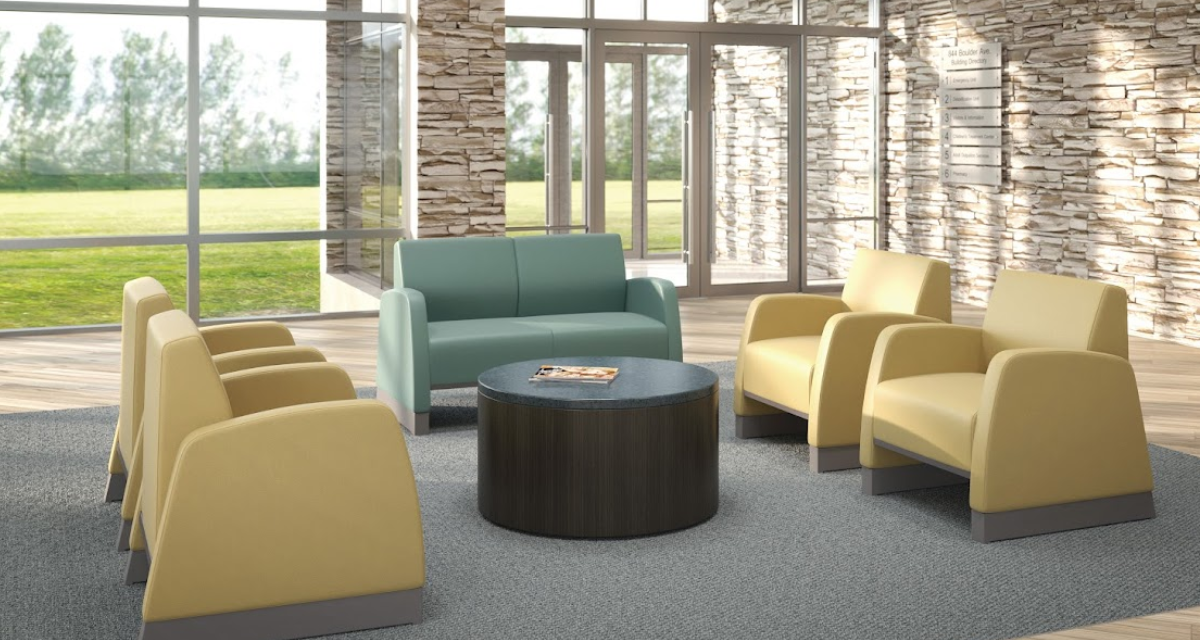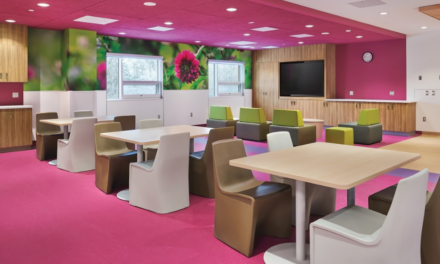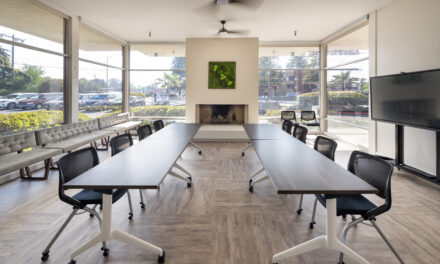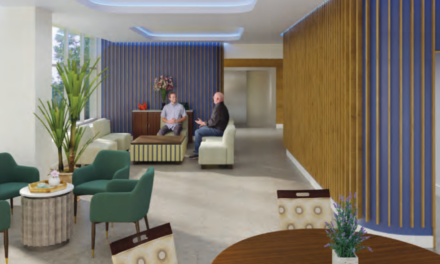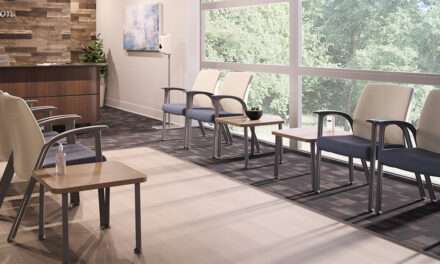Designing a behavioral health facility requires more than functionality. It demands a thoughtful balance of safety, comfort and operational efficiency. This comprehensive room-by-room guide outlines strategies for creating therapeutic environments while emphasizing adaptive reuse and trauma-informed design principles.
Why Behavioral Health Facility Design Matters
Behavioral health facilities are unique environments where safety and therapeutic design must coexist. Poorly designed spaces increase behavioral health risks, jeopardizing patients and caregivers. By applying trauma-informed design principles and leveraging adaptive reuse, facilities can transform into safe, healing environments.
The goal? Create spaces that not only support mental health recovery but also promote staff efficiency and operational excellence.
Patient Rooms: Creating a Safe and Therapeutic Environment
Patient rooms are where recovery begins. These spaces should prioritize patient safety while fostering a sense of comfort and security.
Ligature-Resistant Behavioral Health Beds for Safety
Ligature-resistant beds are a cornerstone of patient safety. These specially designed beds minimize self-harm risks without sacrificing comfort. Consider beds with therapeutic features, such as adjustable positions and zipperless mattresses.
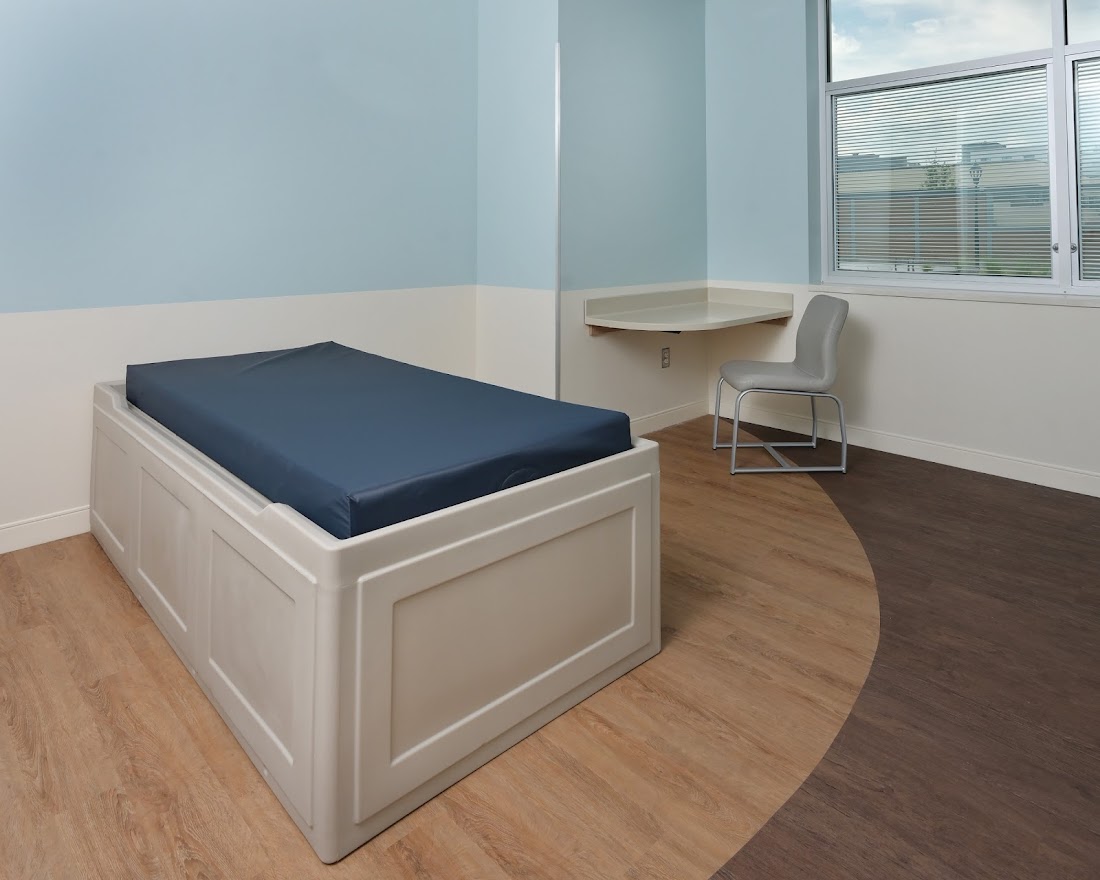
Durable Bedding for Healing Spaces
Bedding must balance comfort and safety. Opt for durable, stain-resistant materials that are easy to clean and can withstand rigorous use. Bedding designed for behavioral health facilities often features tamper-resistant features and smooth seams.
Hygiene in Mental Hospital Rooms
Hygiene is a critical component of patient rooms. Equip your janitorial staff with high-quality cleaning supplies designed to combat infection risks. This is particularly important in mental hospital rooms, where maintaining a clean and calming space supports both physical and mental health.
Quick Tip: Incorporate trauma-informed design elements such as soft, natural lighting and neutral colors to create a soothing environment.
Common Areas: Healing Spaces for Connection and Growth
Common areas, such as activity and community rooms, are essential for social engagement, therapy and recreation. These spaces should feel inviting yet secure, fostering healing and community.
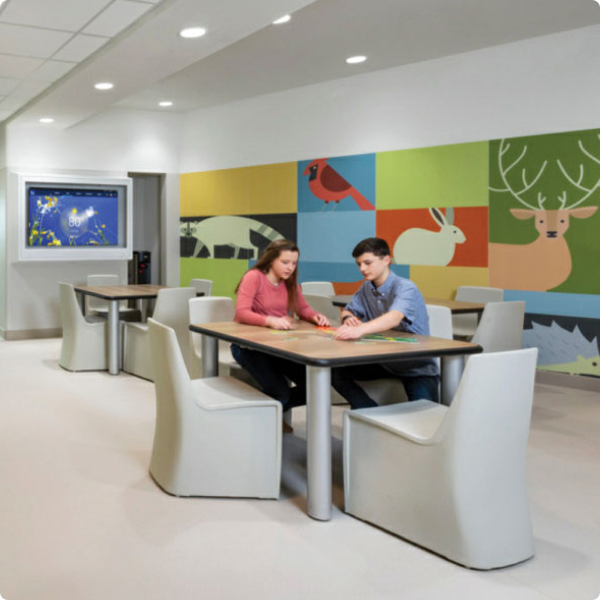
Ligature-resistant Behavioral Health Furniture for Safety and Comfort
Furniture in common areas must prioritize both durability and safety. Ligature-resistant seating, tables and shelving minimize risks while providing a welcoming atmosphere. Choose materials that are easy to clean and resistant to wear and tear.
Floor Care Solutions for Healing Spaces Design
Flooring should strike a balance between safety, aesthetics and functionality. Non-slip, easy-to-maintain surfaces are ideal for behavioral health facilities, ensuring that common areas are safe and visually appealing.
Trauma-Informed Environments for Behavioral Health Facilities
Trauma-informed environments consider the emotional and psychological needs of residents. For example, privacy features such as soundproofing and strategic layouts can reduce stress and foster trust in behavioral health assisted living facilities.
Quick Tip: Incorporate open layouts and natural light to create a sense of freedom and connection, reinforcing the healing process.
Kitchens and Dining Areas: Supporting Nutrition and Recovery
Kitchens and dining spaces must be functional, safe and conducive to well-being. Nutrition is a vital part of mental health recovery and these spaces should support that goal.
Cooking Equipment for Behavioral Health Facility Design
Modern cooking equipment can improve meal preparation efficiency while reducing energy costs. Durable appliances such as ovens, refrigerators and dishwashers specifically designed for behavioral health facilities ensure reliability and safety.
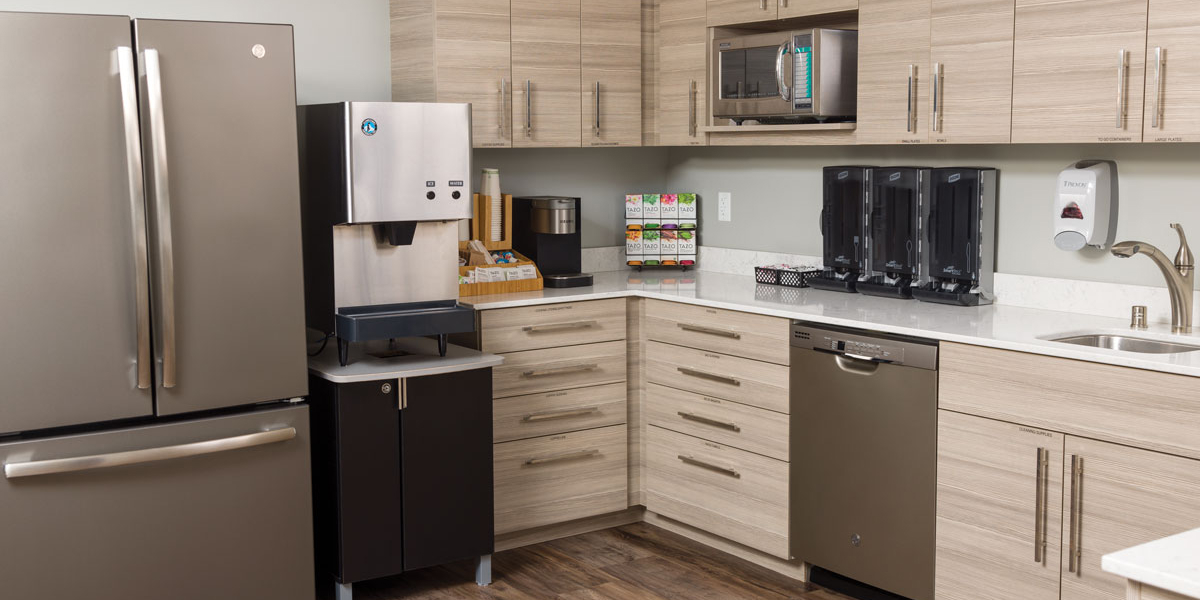
Slip-Resistant Flooring in Mental Health Interior Design
Kitchens and dining areas are high-traffic zones. Slip-resistant, easy-to-clean flooring is essential for reducing accidents and maintaining a safe environment for both staff and residents.
Maintaining Clean, Therapeutic Spaces with Janitorial Supplies
Effective janitorial tools and supplies are critical in these areas. Use hospital-grade cleaning products to meet infection control standards while creating a hygienic, welcoming space.
Pro Tip: Adaptive reuse projects in kitchens can save costs while transforming outdated layouts into modern, efficient spaces.
Administrative Spaces: Supporting Efficiency and Caregiver Well-Being
Administrative spaces are just as important as patient areas. A well-designed medical office, admissions room or staff space can enhance productivity and reduce burnout.

Operational Efficiency Through Adaptive Reuse in Behavioral Health Facilities
Adaptive reuse strategies can transform administrative areas, maximizing space and minimizing costs. For example, repurposing storage rooms into staff lounges or offices can improve facility workflows.
Energy-Efficient Appliances for Behavioral Health
Equip break rooms with energy-efficient refrigerators, microwaves and coffee machines. These small touches can make a big difference in staff satisfaction and productivity.
Ergonomic Furniture for Mental Health Staff Comfort
Ergonomic furniture supports staff well-being by reducing fatigue and discomfort during long shifts. This contributes to a more efficient and focused caregiving team.
Emerging Behavioral Health Design Trends for 2025 and Beyond
Design trends in behavioral health facilities are evolving to emphasize flexibility, sustainability and patient-centered care.
Trauma-Informed Design Principles for Modern Psychiatric Hospitals
Trauma-informed environments are becoming the gold standard in modern psychiatric hospital design. These spaces emphasize safety, comfort and emotional well-being.
Behavioral Health Levels of Care and Facility Transformation
Facilities are increasingly aligning their designs with the various levels of care required for behavioral health patients, from outpatient clinics to inpatient psychiatric hospitals.
Behavioral Health Furniture Trends for Healing Spaces
Furniture is being designed with both form and function in mind. Look for pieces that combine durability, safety and aesthetics to create a therapeutic environment.
Create Healing Environments in Behavioral Health Facilities with Direct Supply
Creating healing environments for behavioral health requires balancing safety, comfort and operational efficiency. Direct Supply offers a comprehensive range of behavioral health solutions, from ligature-resistant furniture to janitorial supplies and modern appliances, tailored to the unique needs of behavioral health settings.
Ready to transform your facility? Partner with Direct Supply to explore innovative solutions designed to create safe, healing spaces. Contact us today to start building environments that foster recovery and growth.
